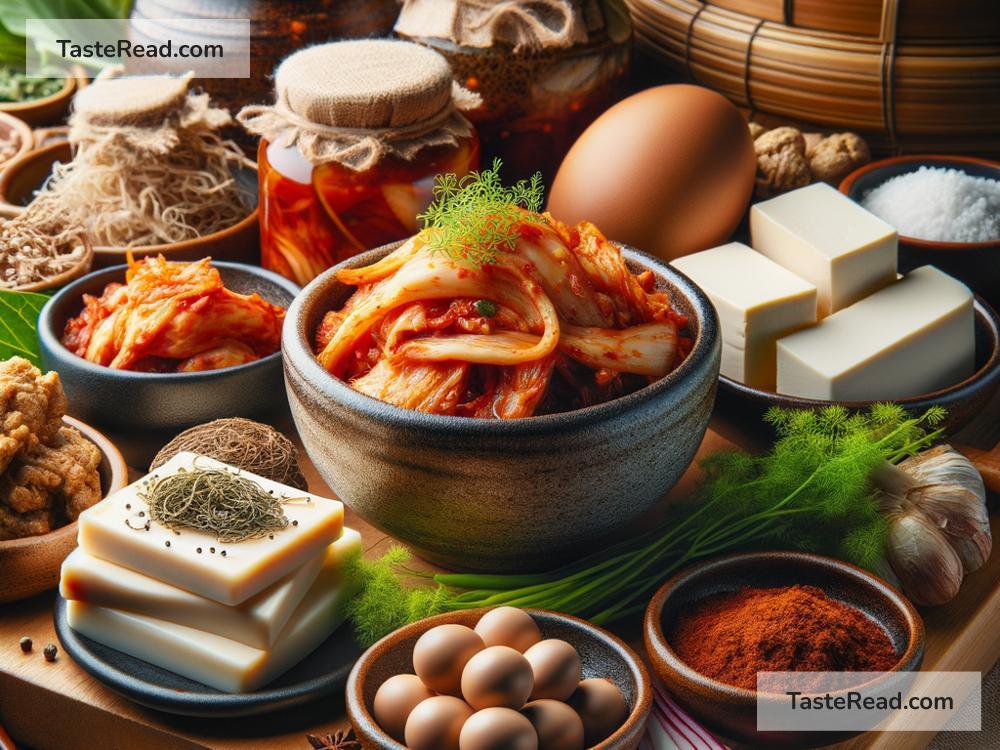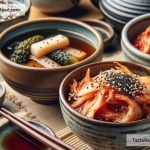The Role of Fermented Foods in Asian Diets
In Asia, the kitchen isn’t just a place for cooking; it’s a laboratory where tradition meets health and flavor. A magical ingredient widely used across this continent is fermented foods. From the tangy Kimchi in Korea to the savory Miso in Japan, fermented foods are not just side dishes but are central to Asian diets. But what exactly makes these foods so special? Let’s dive into the world of fermented delights and their significance in Asian diets.
What are Fermented Foods?
Fermentation is one of the oldest food preservation techniques known to mankind. It involves breaking down food components like sugars using bacteria, yeasts, or other microorganisms. This process not only prolongs the shelf life of foods but also enhances their nutritional value and taste. Throughout Asia, almost every country has its unique version of fermented foods, which have been passed down through generations.
Health Benefits
One of the main reasons fermented foods are a staple in Asian diets is their health benefits. These foods are rich in probiotics, which are beneficial bacteria that play a crucial role in maintaining a healthy gut flora. A healthy gut is essential for good digestion, a robust immune system, and even mental health. Moreover, fermentation increases the availability of vitamins and minerals in foods, making them more nutritious. For instance, the fermentation process in soybeans (to make soy sauce or tempeh) increases the amount of Vitamin B12, a nutrient essential for nerve function and blood cells.
Flavor and Preservation
Aside from the health perks, fermentation introduces a unique depth of flavor to foods. The process can produce tangy, savory, or even slightly alcoholic notes, making each food distinct and delicious. These complex flavors are hard to replicate with non-fermented foods and have become a cherished part of Asian culinary traditions.
Moreover, before refrigerators were common, fermentation was a key method to preserve foods, especially in harsh climates. Vegetables like cabbage, radishes, and cucumbers are transformed into long-lasting side dishes through fermentation, ensuring a supply of vital nutrients throughout the year.
Fermented Foods in Asian Cultures
Each Asian country has its fermented specialties. Let’s explore a few:
-
Korea: Kimchi is undoubtedly the star. This spicy, fermented cabbage, sometimes with radish, is loaded with flavors of garlic, ginger, and chili. Beyond its delicious taste, Kimchi is also packed with vitamins and is a great source of probiotics.
-
Japan: Miso, a fermented soybean paste, is integral to Japanese cuisine. It’s the backbone of miso soup, a staple in Japanese meals. Miso adds a rich, umami flavor to dishes and is valued for its beneficial enzymes and bacteria.
-
China: Fermented tofu, known as Doufu Ru, is a pungent, flavorful condiment often used in Chinese cooking. It’s rich in protein and a good source of Vitamin B12.
-
India: While not East Asian, India deserves mention for its rich tradition of fermented foods. Dahi (yogurt) and idli (fermented rice cakes) are integral to Indian diets, providing probiotics and aiding digestion.
Bringing Fermented Foods into Your Diet
Incorporating fermented foods into your diet is simple and can be a tasty adventure. Start with readily available options like yogurt, kimchi, or miso. Add a small serving of kimchi to your rice, soup, or noodles to introduce probiotics and a burst of flavor to your meals. Miso can be used in soups, dressings, and marinades, offering a savory umami taste. Remember, moderation is key as some fermented foods can be high in sodium.
Conclusion
Fermented foods play a vital role in Asian diets, not only for their health benefits and food preservation but also for the unique flavors they bring to the table. They are a testament to the ingenuity of traditional food preparation methods and the deep understanding of nature’s processes. By integrating fermented foods into our diets, we can enjoy the rich tastes and nutritional benefits that have sustained cultures across Asia for centuries. It’s a journey of discovery, one delicious spoonful at a time.


